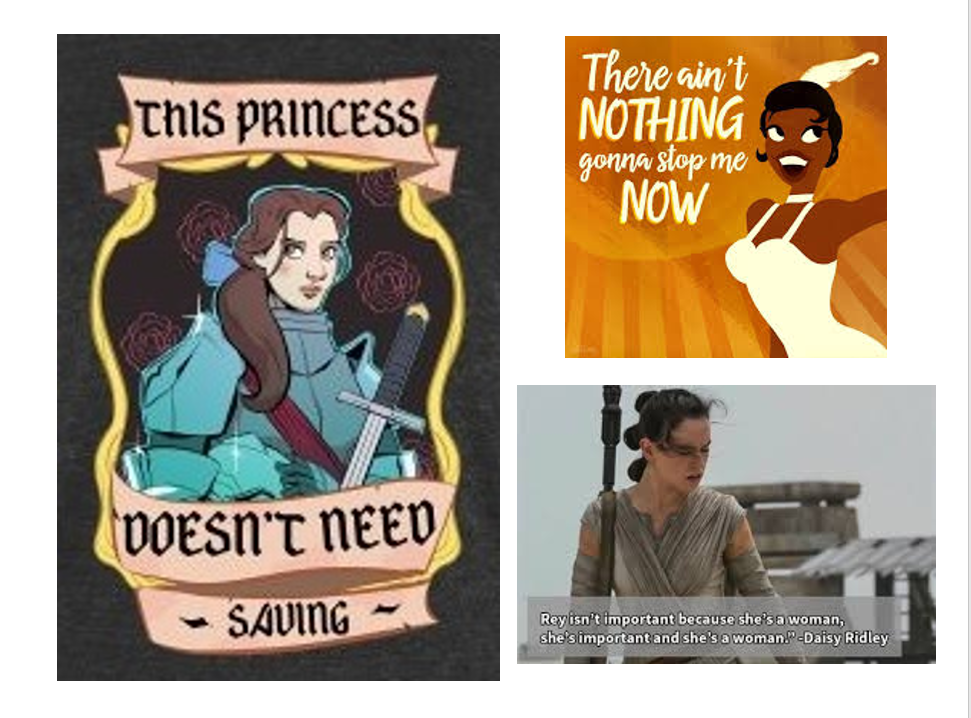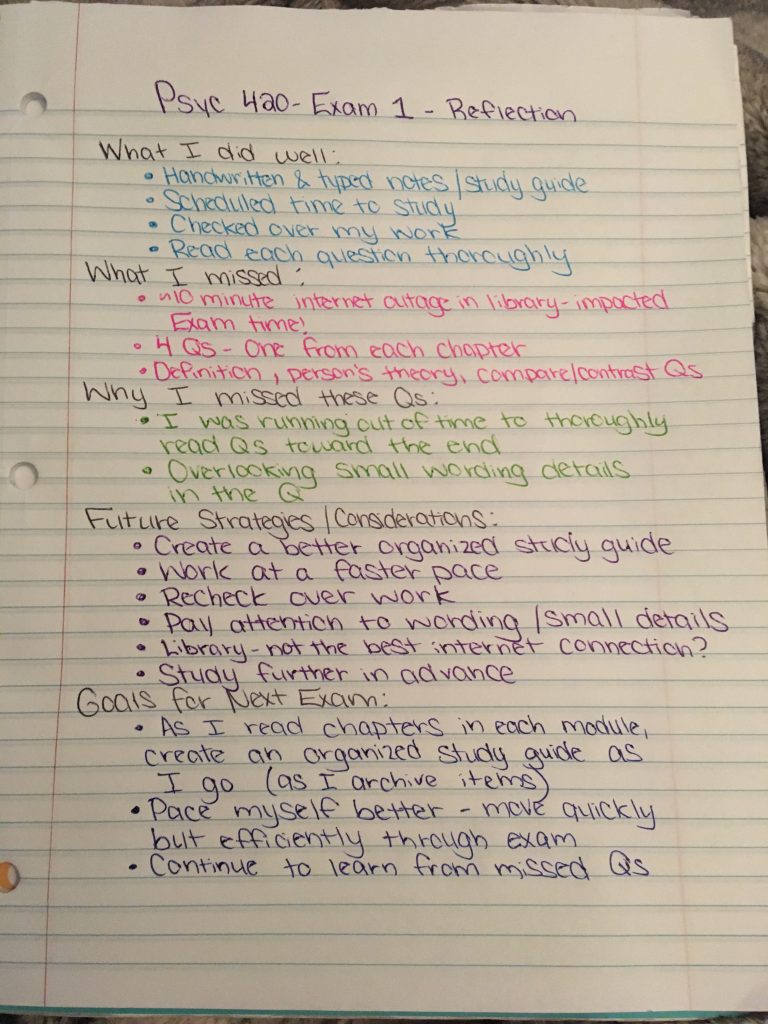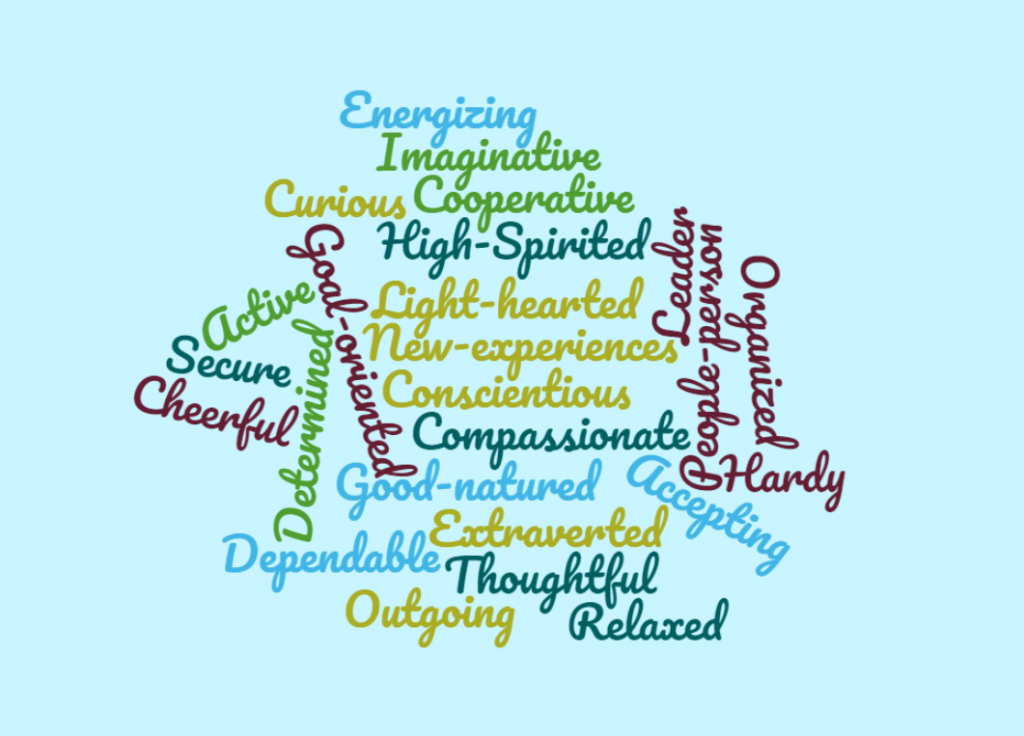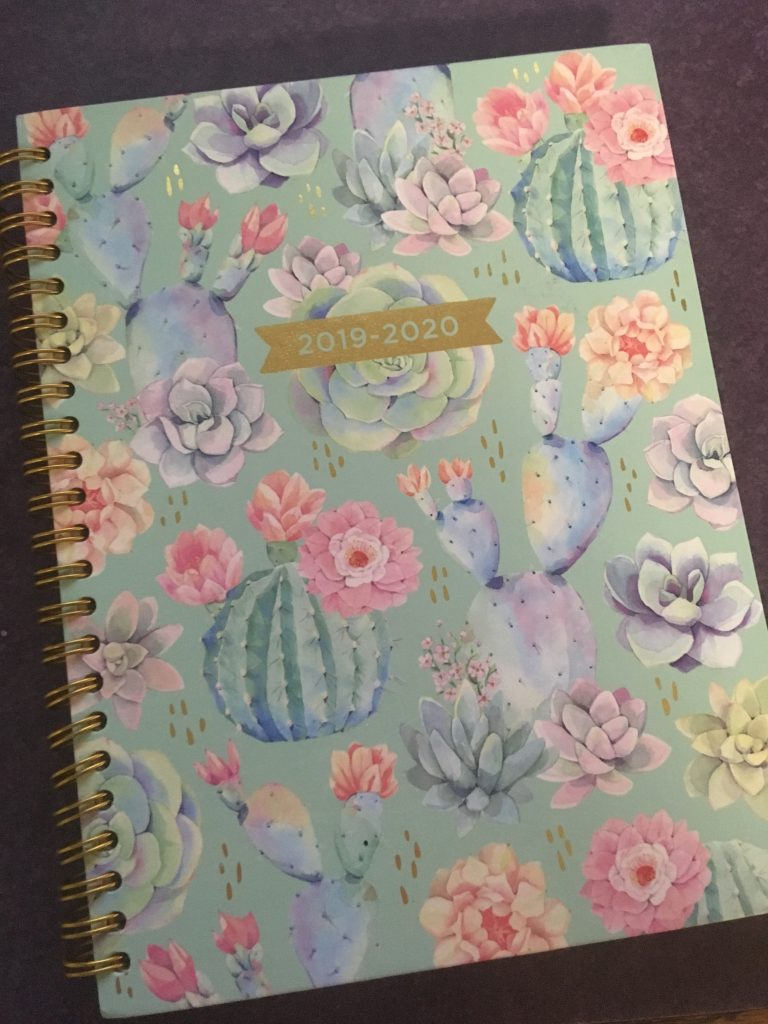Blog 10: Reflection and Roses

Looking back through my progress in this course, I can say that I have learned and grown in many ways. As I stated in Blog 1, my expectations were to cover the course objectives through the content of this course. Referring to the course objectives, I would say that I have, in some capacity, achieved all these learning objectives. I have learned from psychological research and theory relating to culture. An example of this is through Assignment 5: I was able to read and analyze current cross-cultural research and relate this research to theories studied in this course. I have gained a better understanding of cultural diversity and the impact of culture on the everyday lives of people. For example, learning about the interdependent and independent construals of self gave me insight into how characteristics of the self are displayed differently among cultures, and how it affects the way people of various cultures live. I have a greater understanding of people from other cultures and have gained skills to successfully interact with them. Learning that emotions are displayed differently among cultures helps me to understand these cultures better and will help me to communicate more effectively with people of other cultures. Through all the assignments in this course, I have been able to apply my critical thinking skills. The prompts in this course have encouraged critical thinking and making connections from this course to outside coursework and experiences. The ability to make connections with course content and outside material gives meaning to course takeaways and is more applicable to the real world of the student.
My attitudes toward Social Psychology have changed throughout the duration of this course. Concepts that I once thought were universal, such as emotional display, are vastly different among cultures. The need for affiliation is a universal concept, but culture has a great impact on how this need is met. Many of these concepts studied in this course, and more, have taught me how the social psychology of humans is different depending on the culture. I have always been aware of cultural differences, but this course has exposed me to new perspectives and ideas that I had never even considered due to my lack of exposure to new cultures.
If I took this class again, I don’t know if I would change anything. I have learned through the course content, but more importantly, I have grown through self-reflection and relating topics to my outside studies and experiences. I enjoyed reflecting on each chapter through items to archive and blog posts, relating course material through assignments and takeaways, and building an ePortfolio site that culminates the semester’s work. Academically, I have grown through learning to connect topics in this course to my life. Including a representative image with each blog post, archived item, and assignment takeaway helps to bring focus to how the information relates to my personal life. Through this course, I can transfer the skill of creatively making personal connections from the content studied to my professional life. As a professional that works with others, I must know how to effectively relay information. By knowing how to make the information personal in a creative way, others will be able to understand and retain the information more effectively. As I made the content in this Cross-Cultural Psychology course easier to understand and retain through personal connections, I can use this strategy in any career or profession that I pursue.
Blog 9: Putting It All Together

The top three things I have learned this semester from this course include the topics of culture and personality, the independent and interdependent construals of self, and culture and emotion.
In Blog Three, I discussed my personality based on my NEO inventory results. After taking the assessment, I found that my results aligned with how I would describe my personality. Knowing the five different dimensions of personality helped me to define my personality better and identify how my culture has shaped my personality. I actually utilized this blog post in writing a personal reflection essay for graduate school.
Blog Five helped me to better define my construal of self. I completed a series of “I am…” statements and categorized my responses in interdependent construal of self and independent construal of self categories. I learned that my construal of self reflects the norms of my Western culture.
Blog Eight taught me how various cultures display emotion differently. Prior to this class, I had not thought about the differences in emotional displays across cultures. I assumed that emotional displays were universal. After reading the supplemental article, referencing the related textbook chapter, and reflecting on personal observations and experiences, I gained a greater understanding of how the display of emotions differs among cultures.
Many of the assignments in this course were based on topics that intertwined with one another. One pair of related assignments included Assignment Three and Blog Five. As previously stated, Blog Five taught me how to better identify independent and interdependent construals of self. In Assignment Three, I had the opportunity to read a series of blog posts from a student who studied abroad in Ireland. From the series of blog posts, I inferred the student’s personal transformation from his cultural experience. I noticed that he adopted a more interdependent construal of self as he adopted values similar to the people of Ireland. Because I had a better understanding of the independent construal of self and interdependent construal of self from Blog Five, I was better able to analyze the student’s blog posts for Assignment Three.
Finally, I was able to connect topics from this course to another course I am taking simultaneously, which is Psyc 410, Cognitive Psychology. In the “Culture and Cognition” in “Cross-Cultural Psychology,” the serial position effect is defined. This suggests that people have a better memory of items at the beginning and end of the list, otherwise known as primacy and recency effects. This course discusses how psychologists have studied this effect across cultures. In my Cognitive Psychology course, we participated in an online Cognitive Lab based on the Serial Position effect. Ten letters were presented every one second. I then had to recall the order of the letters to the best of my ability. My results yielded data that supported the Serial position effect and created the Serial position curve. Completing this lab gave me a better understanding of the serial position curve and how information can be transferred to long-term memory. From my better understanding of the Serial position curve in Cognitive Psychology, I was able to apply the concepts I learned from that course to this one.
Overall, Cross-Cultural Psychology has taught me new information, prompted me to reflect on my personal experiences, and has allowed me to connect ideas among what I have learned and experienced. Reflecting on the posts in my e-Portfolio, assignments, and items archived, I have been able to put it all together and gain a greater understanding of culture and psychology.
Blog 8: Culture and Display of Emotion

Various cultures express their emotions differently. It was not until I read the article Emotion Perception Across Cultures that I truly came to this realization. Western cultures are typically more expressive of their emotions, while non-Western cultures tend to mask emotions. People follow a set of cultural norms called display rules when displaying emotions.
In a study conducted in the 1970s, American and Japanese subjects watched horror films individually and with a researcher present. While no researcher was present, both groups were expressive of their emotions regarding the film. When the researcher was present, Japanese subjects hid their emotions, while American subjects did not. This is an example of how Japanese emotion display rules differ from American emotion display rules: the Japanese suppressed negative emotions in the interest of the community, while Americans favor individualism over collectivism, and displayed negative emotions regardless if a researcher was present.
As a student employee, I have had the opportunity to work with a wide range of cultures at a diverse university. After reading the article mentioned above, I have realized that many students of non-Western cultures are less expressive of emotions compared to American students. As a personal trainer, I have noticed that people of the American culture are more likely to give feedback about a tough workout than a person of Asian culture. This could be because the display rules of the Asian culture endorse masking negatively-connotated emotions. If my client of the Asian culture feels discouraged during a challenging workout, it is more difficult for me to gauge this level of emotion compared to a client of American culture. Before I read this article, I would have expected that this behavior would not be dependent on culture, because I did not realize how much emotion was affected by culture. After reading the article, I would expect that people of non-Western cultures would be less open and expressive regarding their emotions compared to people of the American culture.
An interesting point made from the article reminded me of an icebreaker activity. The icebreaker is to have each member of the group display a face with conflicting emotions: either happy eyes with a sad mouth, or sad eyes with a happy mouth. The article Emotion Perception Across Cultures actually mentions a study that presented faces of conflicting emotions to people of the American and Japanese cultures. After comparing results among cultures, it was suggested that people of the American culture focused more on the mouth, and people of the Japanese culture focused more on the eyes when determining the emotion of the face. The reason for this may be that the Japanese must pay close attention to detailed features that are more difficult to read since emotions are often concealed in the community.
As an American participating in this icebreaker activity, I have found that it is easier to display the desired emotion through the mouth than it is to display the desired emotion through the eyes. The American culture emphasizes expressing emotions more openly, and it is through a wide grin or deep frown that emotions are easily presumed. I would expect that if I were to observe a student of non-Western culture participate in this icebreaker, the eyes would become the focus on the display of emotions in the face.
Blog 7: Culture and Modern Day Fairy Tales

I grew up watching many original Disney movies that were based on fairy tales such as Beauty and the Beast, Cinderella, and Sleeping Beauty. I modeled after the Disney princesses because they were beautiful and fell in love with a handsome prince. Since then, I have learned to appreciate modern fairy tale characters. One of my favorite modern Disney movies is the Princess and the Frog, which is about a young lady of color from a lower economic class. She is seen as an independent protagonist, who does not seek to find a handsome prince; in fact, marrying the prince repulsed her at first. She has given me a sense of inspiration to independently work hard to accomplish my goals and dreams.
Another modern Disney story with a strong female lead-role is Star Wars. The Jedi protagonist, Rey, is viewed as a strong heroine. The influence of this movie on young audiences is that females are more likely to enjoy Star Wars, which was once had a predominately male fan base. Having a feminist protagonist can have a major impact on audience reception.
As our culture evolves, so do our fairy tales and stories. The article by Kathy McInerney discusses how gender and sexuality roles are more reflective of our modern culture in the 2017 remake of Beauty and the Beast; specifically, with an independent female protagonist, and characters of gay sexual orientation. Although the ways these characters are represented may cause some controversy among those who hold a more traditional view, our fairy tales must evolve alongside our culture. Modern fairy tales are moving away from female characters being dependent on male heroes. People of color are becoming better represented, such as the protagonist in the Princess in the Frog. In the new Star Wars movies, Rey has a love interest with a stormtrooper of color named Finn. Interracial dating and marriage is another cultural concept that was once controversial, but has now evolved with the modern culture.
As more movies are remade and released, our modern-day fairy tales will become more representative of the culture we live in, which is representative of people with diverse genders, backgrounds, races, sexual orientations, cultures, and more. Fairy tales do reflect a shared set of cultural norms and values. These cultures and values just evolve over time, and in turn, the way fairy tale characters are represented evolve as well.
Blog 6: Self Determination Theory and My Academics

The self-determination theory consists of three qualities that are needed for the use and development of the greatest human potential. These three qualities include competence, relatedness, and autonomy. Autonomy is shown when people control their own actions according to their own interests and desires. Relatedness refers to the support of others and belongingness. Competence regards how confident people are in their learning and skills. The extent to which these qualities are demonstrated in a person differs among cultures and contexts.
Related to the self-determination theory is the cognitive evolution theory, which supports that the environment impacts sources of motivation. Environments and role models that foster the self-determination qualities in learners promote a significant amount of human growth compared with environments that focus on incentives, deadlines, and other forms of control. There are two main sources of motivation: intrinsic and extrinsic. Extrinsic motivation is motivation stemmed from an external stimulus. Contrastingly, intrinsic motivation is increased when autonomy, competence, and relatedness are enhanced. Intrinsic motivation is illustrated when a person feels a sense of accomplishment or satisfaction from an activity that holds personal value.
Some of my best qualities are shown through my academics. I would describe myself as an intrinsically motivated learner. I study exercise science and related coursework because I love the subject and how I can apply the information to help others. It can be challenging to stay intrinsically motivated with the structure and deadlines of the college environment, but I must remind myself that I am learning to learn for my own benefit, not just to earn a high GPA.
I satisfy the need for autonomy through my academics when I control what I study. I am completing my bachelor’s degree in Exercise Science because of my desire to become a physical therapist. I choose to study this topic because I am intrinsically motivated to learn the science behind exercise and how I can help others with this knowledge.
I satisfy the need for competence through my academics when I feel that I have mastered a challenging task. It is rewarding after I learn a concept that I can use to help others or to confidently teach a subject to someone because that indicates my expertise in the subject.
I satisfy the need for relatedness through my academics when I am supported by those with similar interests and goals, or those who help me reach my goals. I have many role models and peers that encourage my personal and academic growth. Not only that, but working in my field requires working with people, and it is because I am intrinsically motivated to help others that I chose to pursue this area of study.
Going to college and learning is something that I genuinely enjoy doing. I am motivated intrinsically to reach my academic goals. After reviewing the self-determination theory and the supporting cognitive evolution theory, I have found that I can relate these universal human needs and motivations to my academic career.
Blog 5: Independent versus Interdependent Construal of Self

- I am a learner
- I am a leader
- I am a helper
- I am adventurous
- I am a friend, sister, and daughter
- I am a role model
- I am a hard worker
- I am a small piece in a larger puzzle
- I am determined and capable of doing great things
- I am who I am and there’s no one quite like me
The interdependent construal of self is a viewpoint that connects the self with others. Social roles and relationships are emphasized for people who hold this viewpoint.
Numbers 1, 2, 4, 7, 9, and 10 fit into the independent construal of self category. Numbers 3, 5, 6, and 8 fit into the interdependent construal of self category. 60% of my answers reflected independent values, and 40% of my answers reflected interdependent values.
English proverbs that apply to my characteristics include:
- You are never too old to learn
- If a job is worth doing, it is worth doing well
- Nothing is impossible with a willing mind
- You never know what you can do until you try
- Be yourself
- Alone we can do so little; together we can do so much
Of the six proverbs, only the last one reflects interdependent values.
I am more inclined to thinking of characteristics and quotes that reflect the independent construal of self because I have grown up in a country that reflects those values. According to the text, Western cultures tend to describe themselves as independent of others, and non-Western cultures do not. In a previous study that asked participants to complete a similar list to the one I completed above, people of the American culture produced more abstract traits, whereas people of the Asian culture produced more role-related traits (Matsumoto & Juang, 2008).
Before I read the full chapter and read the blog prompt, I wrote out my list of “I am’s.” Based on my initial answers, I would describe myself as more independent. Although I am mostly an independent thinker, a portion of my list fits within the interdependent category. An explanation for this may be based on the fact that I value some interdependent values such as connecting with others and teamwork. Nonetheless, I would say that I am overall more independent than dependent on others.
Matsumoto, D. R., & Juang, L. P. (2008). Culture and psychology. Belmont, CA: Wadsworth/Thomson.
Blog 4: Lessons from Exam One

One exam down, two to go! By reviewing my exam after the results were released, I was able to gain insight into what I did well and what I can continue to improve upon.
When the testing period was over and results were released, I first identified which questions I had difficulty with. I checked to see which questions I answered correctly, and which ones I missed.
Then, I went back through the textbook and my notes to find the correct answers to the questions I missed. This is an important step, because learning from what I missed not only helps me to understand the content better, but makes me a more effective learner.
Finally, I created a reflection page in my notes, which I will use as a guide in order to improve my study and test-taking strategies in the future. This reflection contained what I did well, what kinds of questions I missed, why I missed these questions, any future strategies and considerations I wish to employ in the future, and my goals for the next exam. By reflecting on my test in this way, I now have a blueprint in which I can base my future study strategies upon.
Blog 3: My Personality

The NEO inventory is a tool that can describe five different dimensions of a person’s personality. These dimensions include Openness, Conscientiousness, Agreeableness, Extraversion, and Neuroticism.
I found that my score was very high in the Extraversion category. I am not the most outgoing or loud person, but I do enjoy being around others. My current job positions as a physical therapy rehab tech, personal trainer, group exercise instructor, and outdoor adventure trip leader require me to be extraverted with those I work with. My future career as a physical therapist involves working with others as well. I love working to help people reach their goals, and I feel energized by spending time and working with them.
The category Agreeableness was also very high for me. I consider myself easy-going and cooperative. I am a good listener and like to consider the perspectives of others. For example, when completing a group project, I listen to the opinions of my group members and will cooperate to find the best approach. I do my best to avoid conflict. Others would describe me as likable, thoughtful, and considerate.
Openness was another high category for me. I try to keep an open mind in all that I do. There is so much to learn, and I wish I could absorb it all. I love traveling to new places and trying new things. After traveling to Ireland last spring break, I fully intend to make international travel part of my life.
Conscientiousness was also a high category for me. I define my goals clearly and work hard to achieve them. I am determined, driven, and goal-oriented. My biggest goal is to become a physical therapist, and it has taken hard work to get where I am now. I know that if I stay focused, I will achieve what I set out to do.
I scored very low in the neuroticism category. I have an easy-going, low-stress personality. I often have the attitude of, “everything happens for a reason,” and as long as I know that I am being conscientious, I am not worried under stressful situations. For example, before a test, if I know that I have studied ahead of time, and I take the time to relax the night before, I perform better than I would if I were to frantically study the night before.
I found that after taking this assessment, my results were consistent with how I would describe my personality. The results of this inventory help me to define my personality better.
Blog 2: My Values and Career Goals

My parents have played a significant role in my decision to pursue higher education and my future career. They have shaped my values while allowing me to grow into an independent thinker. I take what I have learned from my parents and apply it to my own experiences in order to determine my own values. Values relevant to my career pursuit can be narrowed down to two main topics for me: which is working hard and helping others.
My dad has always told me that his grandfather taught him that, “the more dirt under your fingernails, the longer you’ll live.” My mom has always told me, “As long as you try your best, that is all that matters.” I have carried the value of trying my best and working hard with me throughout my academic career. I have always earned good grades, put forth full effort into every task I set out to accomplish, and work to make myself proud of what I can accomplish. In college, I have taken it upon myself to work four part-time jobs while being a full-time student, so that I can afford to pay for school without the financial assistance of my parents. My parents have taught me that working hard builds character, and to this day, I agree with them. When I got my first job at the age of 16, I was a dishwasher at a small restaurant. Eventually, I worked my way up through that manual labor to a hostess position, and then, again, worked my way up to a server position. In college, I wanted to work in the gym on campus: similarly, I worked my way up from a Fitness Specialist to a certified Personal Trainer, then gained enough experience to feel comfortable teaching exercise in a group class setting. Working hard has taught me that with patience and dedication, I can start out anywhere, learn from mistakes and experiences, and grow into someone I am proud to be.
For as long as I can remember, my dad has told me how rewarding it is to work in the medical field where you are such a big part of a patient’s healing process. As I have grown older, I have realized that this healing can be more than physical. A small act of kindness can make all the difference in the world for a person. My dad, who works in the field of physical therapy, encouraged me to pursue my doctorate in the field. As a college student, I have found a passion for working with people. In both of my on-campus jobs, in Fitness and Wellness and Outdoor Adventure, I am able to work with people through challenges in order to help them reach a sense of accomplishment. Working with people one-on-one to achieve their goals and better their health and wellness is the reason why my career goal is to become a physical therapist.
My values were established from the foundation of values my parents laid out for me as I was growing up. As a college student, I am able to apply these foundational values to my experiences in order to establish my own values. My values are still developing, just as I am still learning, but I am confident in my decision to pursue higher education in order to find a fulfilling career that fosters helping others and growth from effort and dedication.
Blog 1: Success in Psyc 420

The course Cross-Cultural Psychology is designed to expose students to scientific concepts regarding worldwide culture and psychology. Students are expected to learn how to better interact with people of other cultures by gaining a greater understanding of the diversity of various cultures. By critically thinking, and the application of information learned, students will be able to connect concepts of cross-cultural psychology to the world outside the course.
I am hoping to gain a better understanding and appreciation for other cultures through this course. Currently, I feel that I can expand on my cultural awareness, sensitivity, and appreciation. Applying what I learn through this course to my experiences, and my experiences with what I learn in this course, I will be able to deepen my understanding of the impact of cultural diversity.
Learning how to understand and interact with people of other cultures is a vital skill to have for my future career path. As an Exercise Science major, I will be working with people in my future career. I would like to further develop my cultural understanding so that I can efficiently work with my future clients, patients, and co-workers.
My expectations for this course are to cover all the stated course objectives through lectures, assignments, and e-portfolio assignments. Many of these assignments will require critical thinking in order to deepen my understanding of cross-cultural psychology topics. I intend on using the ideas I learn in this course as a springboard so that I can apply these lessons to my life, even after the semester concludes.
In order to be successful in this course, I intend on completing the modules, assignments, and e-portfolio prompts on time. Taking notes from the lecture slides and book will help me to stay on task, and “study-as-I-go” for the three exams. Keeping up with the archived materials and blogs will help me to build my e-portfolio successfully. I will utilize my planner to map out when I need to have my work completed. I love that I can connect my success in this class to using my planner, because my planner is the first item that I decided to archive. I chose my planner for the Module 3 Archived item because it represents my culture of being a college student; I chose it for this blog post because it represents what I hope to accomplish in this course. Making connections like this will help me to critically think about the information in this class, excel in my coursework, and most importantly, apply what I learn to my everyday life following this course.
